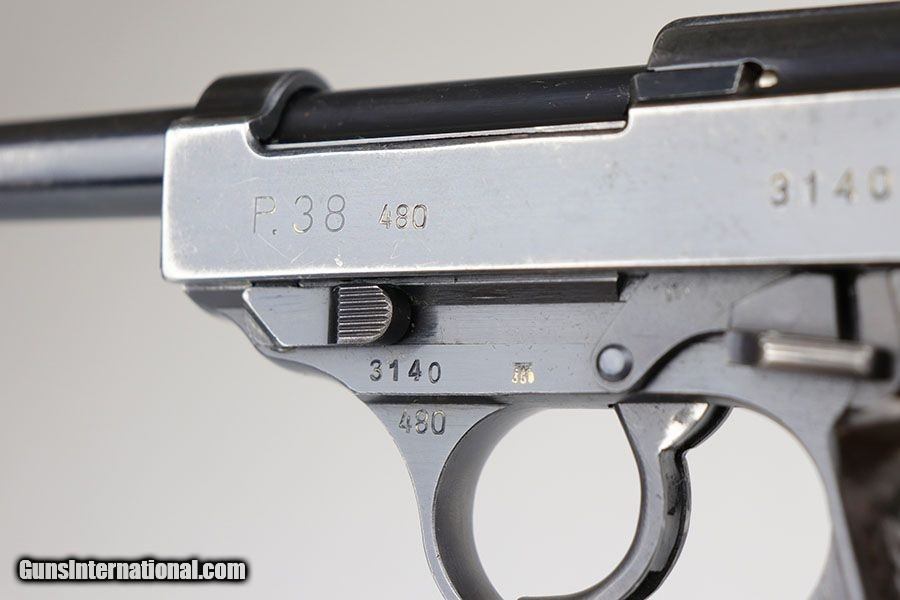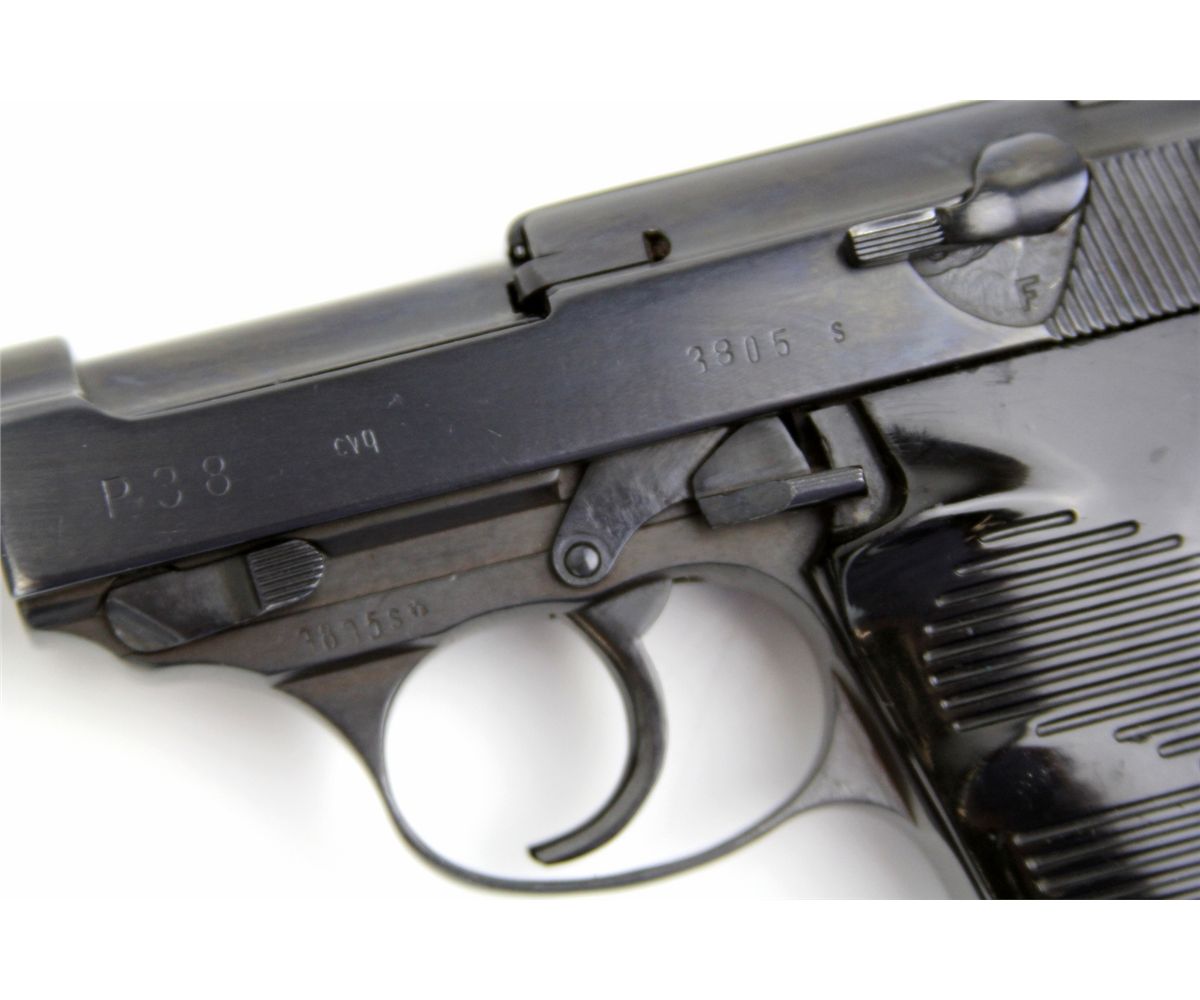
The mag held eight rounds in a single stack. The magazine release was at the base of the grip, easily worked, though it took both hands to change the magazine. The DA pull stacked nicely, so double-action hits, we found, were actually not too difficult. The P38 has an easily cocked external hammer, and the shooter would be well instructed to use it whenever possible prior to firing the gun. Presumably there were different heights of front sight available to help zero the guns. It was dovetailed into a ramp, and had a numeral 6 on its side. The front sight was a flat-top post, easily seen. The rear was a dovetailed, U-notched design that many a modern manufacturer could learn from, because not only did it provide an excellent part of the sight picture, it was also stovepipe-jam smooth for the weak hand. The sights on the early and wartime P38s were actually pretty good. The black plastic, serrated grips were in fine condition. Most of the bluing was still visible, though as noted there were some age pits here and there. As such, the old P38 provides a time window to what things were like in the distant past, making the gun not only a good collectible but also a valuable piece of handgun manufacturing history. However, the slide and frame and associated parts of the locking mechanism are all complex machinings, the sorts of things one will most likely never see again in handgun production. The barrel of the P38 is a complex unit, being machined (as well as we could tell) out of the same block that held the breech-lock mechanism and the rails in which the slide moved. Most of the visible identifying or manufacturing numbers matched, and the fit of the gun was fairly tight, we thought, for wartime production.

The finish was slightly pitted from rusting over time, but it didn’t really harm the overall effect, we thought. Here’s what we found.Īs expected, the machining on this gun was quite rough all over, though the bore looked fairly good. Any decent 9mm for that low of a price could be considered a bargain, but when it has the Walther name on it, as our test pistol did, it’s amazing.īecause of their low asking prices and historical significance, we wondered how these two guns stacked up in a modern testing situation. The P1 was recently priced in several outlets so low as to be a bargain, in the realm of $200 to $250, though we doubt those prices still hold. Recent offerings were made of the P1 by various surplus gun outlets. Our test P38 was made by Mauser in 1944, as noted by the “byf” and “44” markings on the slide. Wartime guns were identified by a letter code. About a million P38s were made during WWII by Walther, Mauser, FN, Brno, and several other manufacturers. The P38 was adopted officially in 1938, hence the P38 (for Pistole) designation. Walther developed the P38 out of its PP, one of the very first double-action pistol designs.

We just tested a wartime P38 against a later P1, the latter being about the same as the P38 of WWII, but made for the West German army, and having an aluminum-alloy frame instead of the all-steel frame of WWII. Many shooters simply wonder how good they were, and how they stack up against today’s products. Still, we recognize the appeal of famous names and well-known designations, and because so few shooters still alive today had to use these guns in anger, there’s natural curiosity about them. Current manufacturing methods and materials are naturally much advanced over what they were 10, 20, 50 or 100 years ago, so on a quality and consistency basis, today’s guns are usually better picks if actual shooting is in the owner’s plans. This is the gun that Megatron transforms into in the Generation 1 animated series.We remain mildly surprised by the ongoing interest Gun Tests readers have for tests of collectible, relic, or just plain old guns. Countries of Useīelow is a list of all the countries that have used the Walther P38 or a variant of it: The P38 was improved on in the 1970s and released under the name of the Walther P5. There was also a model of P1 with a shorter barrel, known as the P4.

The Bundeswehr (German federal police) adopted a modified version of the P38, known as the P1 in 1957. However, the mechanics of the pistols remained well made, in particular the Mauser-built models.

These pistols can be identified by the '0' prefix on their serial numbers.Īs the war went on, the quality finish of the Walther P38 degraded - older P38s had a better finish.
Mauser p38 serial numbers series#
Walther made three series of test pistols. However, the prototype pistols were not manufactured until late 1939. The P38 concept was accepted by the German military in 1938. Luger P08 production was meant to stop in 1942, by which stage the P38 would be the standard issue German sidearm. The P38 was intended to replace the Luger P08. The Walther P38 is a semi-automatic pistol used by the Wehrmacht forces during WWII.


 0 kommentar(er)
0 kommentar(er)
